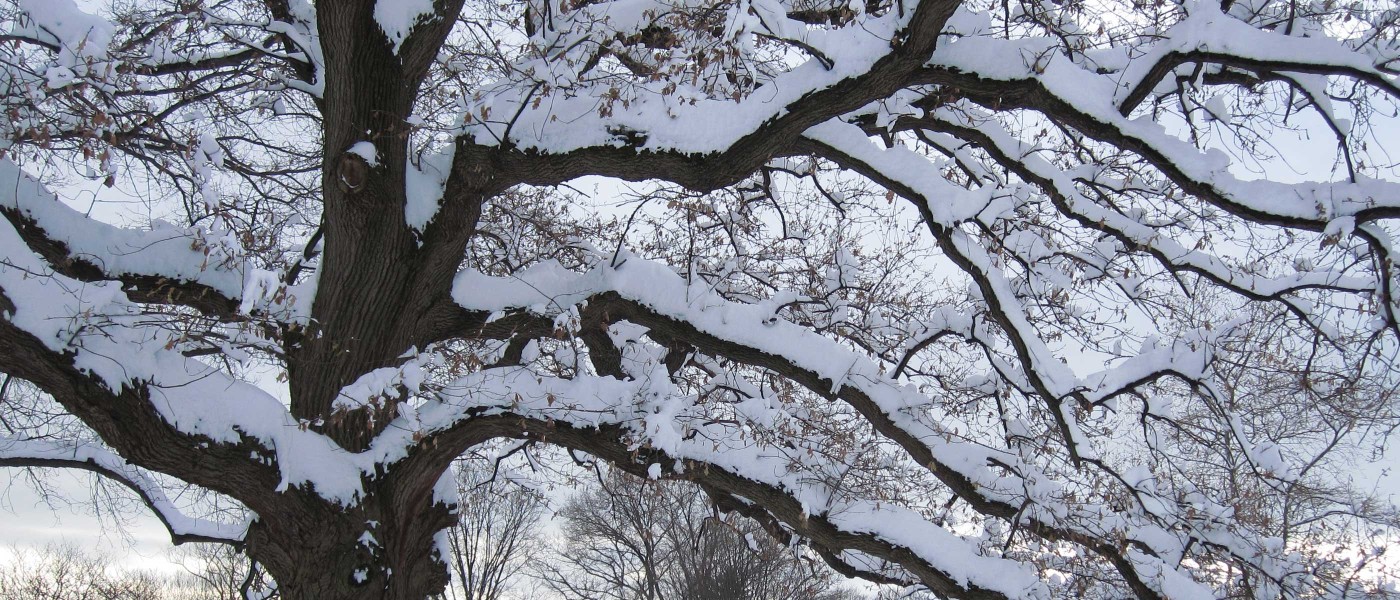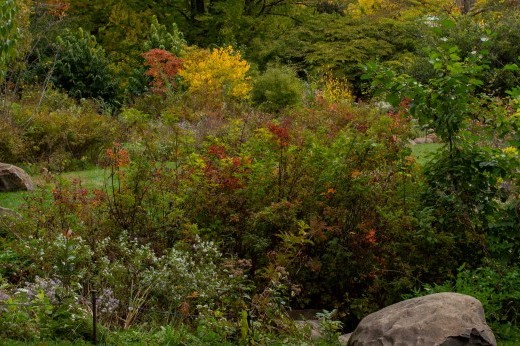Ask a Gardener is a seasonal advice column written by BBG gardener Laura Powell.
Some of my shrubs already have buds! Why is that happening, and should I change my pruning schedule?
Min, Brooklyn, NY
Dear Min,
It’s normal for shrubs to have buds in the winter, don’t worry. Some shrubs, like witch-hazel, even flower in the winter—but judging by your question, I’m guessing you’re not asking about a winter-flowering shrub.
The buds may be larger than they usually are at this time of year if the area you live in has experienced unseasonably warm weather, because buds will often swell when temperatures rise. Sustained high temperatures can occasionally cause a shrub to leaf out or flower (also known as “bud break”) early, but more often than not, cooler temperatures will return and remind the shrub to stay dormant until spring.
As for your pruning schedule, you shouldn’t need to change it. When it comes to the timing of pruning, the basic rules still apply. If you have a flowering shrub and would like to maximize flowering, prune spring-flowering shrubs right after flowering, and prune summer or fall-flowering shrubs in late winter or early spring.
If you aren’t trying to maximize flowering, late winter or early spring is generally a good time to prune most woody plants. Feel free to prune dead or diseased branches at any time of year.
Do I need to water my outdoor plants in the winter?
Max, New York City
Dear Max,
Before I started writing this column I never realized how many answers to gardening questions begin with “It depends.” Should you water your plants in the winter? It depends.
The main factor determining whether you will need to water your plants in the winter is whether they are dormant or not.
How can you know if a plant is dormant? If it is a woody plant, it will have lost all its leaves for the winter. If it is an herbaceous plant, the above-ground parts of the plant will have turned brown.
If your plants are dormant, you will not need to water them until they break dormancy. You will know that a plant’s period of dormancy is over because you will begin to see leaves or flowers. This would most likely occur in the spring, unless you are deliberately breaking a plant’s dormancy early (such as a narcissus bulb you are forcing indoors).
If your plant retains leaves all winter—for example, a juniper shrub or another evergreen plant—it will continue to lose moisture through its leaves, so you may need to water it if you have a particularly warm and dry winter. Which brings us to the second factor determining whether you need to water your plants in winter: the weather.
If the temperatures are below freezing all winter, it is unlikely you will need to water your plants. In freezing temperatures your plants would not be able to benefit from watering because the ground would be frozen and any water would just run off or freeze rather than being absorbed by the plant’s roots.
If it is sunny with high temperatures (consistently above 40 or 50 degrees), and it does not rain, you may need to water your evergreen plants.
The third factor to consider when deciding to water your plants is whether they are planted in the ground or in a container, which brings us to our next question…
I have a container garden. What should I be doing in winter?
Taj, Brooklyn, NY
Dear Taj,
This is a tough question to answer without knowing more about your garden, because the answer is (you guessed it)... it depends!
If your containers are not frost resistant, you should wrap them in insulation to protect them from cracking in the cold. Insulation can be any material that will buffer the cold, like bubble wrap or a warm blanket.
Many winter container gardening tasks will depend on the types of plants you have. Annual plants won’t survive the winter (hence the name). If you have perennial plants that are dormant, but are borderline hardy—meaning they will comfortably survive a mild winter, but may sustain frost damage if it gets really cold—applying a layer of mulch on the soil surface can help protect them. If you have borderline-hardy dormant woody plants, you may want to consider wrapping them.
If you have evergreen plants or borderline-hardy woody plants, and your container garden is in a particularly exposed location (like a rooftop), installing some kind of windbreak such as a burlap screen will protect them from cold, drying winds. If it’s possible to move your containers, place them away from the wind and closer together to provide protection from the wind.
Wherever you put them, be mindful that evergreen plants need access to sunlight even in winter, so if you can find a protected location that still gets as much sun as possible, that would be ideal. If your plants are small enough, you may even consider bringing them indoors for the winter.
If your plants are not dormant, they will need to be watered when the weather gets warm. Container plants dry out faster than bedded plants, so you’ll need to keep a closer eye on your container plants in the winter. If the soil is dry, give them a good soak.
Don’t forget to make time for the best part of winter gardening: perusing seed and plant catalogs and dreaming of spring.
Got a question for Laura? Submit questions for our next installment of Ask a Gardener using the form below.



